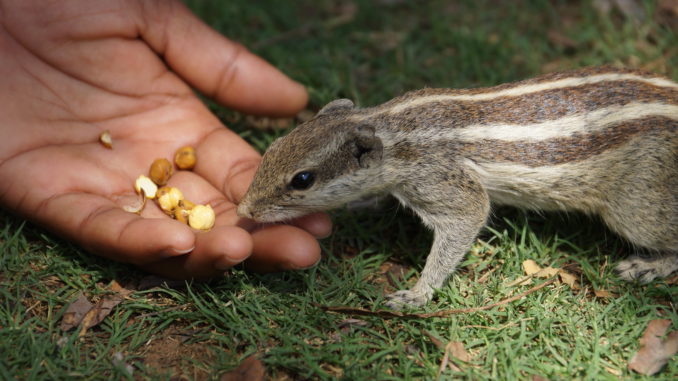
How does climate change especially aggravate the threat of extinction several species face today?
Millions of species are facing new challenges because of climate change. A very simple example would be the polar bear — they need sea ice to hunt seals, and as that sea ice melts away, they and their babies starve to death.
Climate change wreaks havoc on species already struggling to survive.
What is the connection of multiple species with each other and with planet Earth?
Well, we need pollinating insects like bees and butterflies to give us fruits and vegetables. And plants count too — in a big way. We need healthy rainforests both to keep the planet cool and help regulate global rainfall patterns, which enable our crops to dependably grow.
What an impoverished planet ours would be without the other species we share it with. When we save other species, we’re actually saving ourselves — we’re all connected. It’s folly to think we can doom millions of plant and animal species to extinction but we’ll be just fine — it won’t work that way.
What inspired you to work on National Geographic’s Photo Ark project?
My wife had cancer years ago and I stayed home to take care of her. During that time, I reflected on what to do if we made it through. Once she had recovered, I decided to focus on one big project, to really try to move the needle of conservation.
I went to the Lincoln Children’s Zoo to take photos. I asked the staff if they had a small animal that would hold fairly still — they brought out a Naked mole-rat and put it on a white cutting board from their kitchen. He didn’t hold still very well, but I was intrigued by how well I could see his face against the clean white background. That helped me appreciate the animal in a whole new way. That’s how Photo Ark started.
Have you witnessed the threat of extinction increase for some species?
I would likely never have the opportunity to photograph some endangered species featured in the Photo Ark because certain animals are simply no longer present in the wild. They only exist under human care. There are animals so rare now, I rush to get them photographed.
I’ve actually photographed animals that have gone extinct, such as the Columbia Basin pygmy rabbit and the Rabbs’ fringelimbed treefrog. Most animals I photograph have a real impact on me. They’re all like children to me because I’m the only voice most will ever have.
One animal that had a huge impact on me was Nabire — one of the last northern white rhinos at the Dvur Kralove Zoo in the Czech Republic. She was the sweetest. She passed away of complications caused by old age, less than two weeks after our visit.
Now the world just has two left, a mother and a daughter.
Could you develop a deep connect with the birds and animals you photograph?
I am impacted by every animal I photograph. My job is to relay that connection and tell a story through my photos.
I like photographing endangered species — especially the smaller creatures. I use the portrait style because it gives equal weight to creatures big and small — some of the frogs I’ve photographed are the size of a thumbnail. Doing a portrait from their level, with as much eye contact as possible, is a way for me to put them on equal footing with bigger animals like lions and elephants.
The little creatures drive everything, and we’re losing them at an alarming rate.
How can photography create awareness around the extinction crisis?
Photography can expose environmental problems as nothing else can, and it can get people to care. The stakes could not be higher. It’s ridiculous to think we can destroy so many of the Earth’s plants, animals and ecosystems and not think it can happen to us. All of this will come back to bite us, and sooner than we think. The saddest part is, we saw this coming, for decades, yet did very little to stop it.
It is not responsible to show just pretty animals in an idyllic landscape now — we must show the threats to these creatures today. Our photos must inform readers of what is really going on out there.
Matter referenced:
Joel Sartore , Times of India, Ahmedabad, Saturday, 18th January, 2020.
By: Dr. Bhawana Asnani.
Happy to see Reviews, Additions, Suggestions and Comments, further.

Leave a Reply
You must be logged in to post a comment.